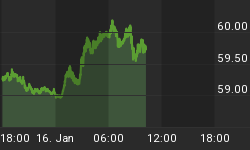America’s largest investment banks have been enjoying a bumper earnings season, with many easily besting top-and bottom-line expectations. JP Morgan Chase (NYSE:JPM), Goldman Sachs (NYSE:GS) and Wells Fargo (NYSE:WFC), Citigroup (NYSE:C) and Bank of America (NYSE:BAC) have all posted better-than-expected results over the past week.
Yet, the same can hardly be said about their stock performance, with some recording significant declines as investors can’t seem to make up their minds about their trajectories.
To be fair, these giant banks have not exactly been covering themselves in glory thanks to slow processes, high fees, and sometimes questionable lending practices.
Still, there are some compelling reasons why an investment into the nation’s biggest banks might be a good bet at this juncture.
Dirt cheap valuations
Wall Street banks are not exactly beacons of innovation or growth, and this is mostly reflected in their valuations. However, it’s possible for the pendulum to swing too far--and right now there are indications it could have.
Goldman Sachs reported earnings of 18.60 per share, way above Wall Street’s consensus of $10.22 per share while revenue of $17.1B greatly exceeded the consensus for $12.6B.
JPMorgan reported earnings of $4.59 per share vs. the Wall Street consensus of $3.10 per share.
Wells Fargo earnings of $1.05 exceeded the 70 cents a share expected, according to Refinitiv while revenue of $18.06 billion was better than $17.5 billion expected.
Citi was equally impressive with earnings of $3.62 a share vs. $2.60 a share expected while revenue of $19.3 billion vs. $18.8 billion expected beat on the upside.
Meanwhile, Bank of America’s EPS of 86 cents a share outpaced expectations of 66 cents a share while revenue of $22.9 billion was better than $22.1 billion expected.
The Street’s Jim Cramer has turned overwhelmingly bullish on Wall Street banks because he believes they are grossly undervalued based on their latest earnings.
Betting on banking stocks
For years, many investors have been shunning these giant banks due to their perceived cutthroat and unethical business practices.
But lately, Wall Street banks have been gradually moving past their dark past.
Case in point is Wells Fargo, a bank that has earned itself the dubious distinction as one of the most scandalous financial institutions in the land after it emerged that it had systematically opened millions of fake accounts for its clients. Former Wells Fargo CEO and President Timothy J. Sloan quickly became the fall guy before being replaced by Charles Scharf in 2019.
Wells Fargo executives have struggled to extricate themselves from a culture that allowed such grievous misdeeds to thrive as well as hostile lawmakers who felt they were not doing nearly enough to fix the deep-rooted malaise at the 168-year old bank.
Meanwhile, the company remains under an asset-cap constraint by the Fed which prevents it from increasing its assets beyond its 2017 level until it can adequately address its past missteps. Consequently, lending and deposit growth have lagged behind that of rivals Bank of America and JPMorgan.
Yet, WFC has been among the best performing banking stocks this year, boasting a 40% YTD return, an indication that investor confidence in the bank is returning. BAC has returned 27.8% over the timeframe while JPM is up 19.8%.
The biggest reason why Wall Street banks are thriving is that they have been releasing the large chunks of money that had set aside to cushion themselves from losses due to the pandemic.
As the coronavirus raged economies across the country, the banks were anticipating economic devastation and set aside billions of dollars to gird against the huge losses that could follow. But thankfully, the worst-case scenario failed to materialize thanks to unprecedented stimulus packages that left consumers flush with cash and itching to spend.
With the U.S. economy poised for a strong recovery thanks to the government unrolling the most successful vaccination program, there’s a good chance that Wall Street banks will continue outperforming over the next few quarters.
This, coupled with their relatively cheap valuations in a market saturated with expensive stocks, makes a strong case for Wall Street banks.
By Michael Kern for Safehaven.com

















